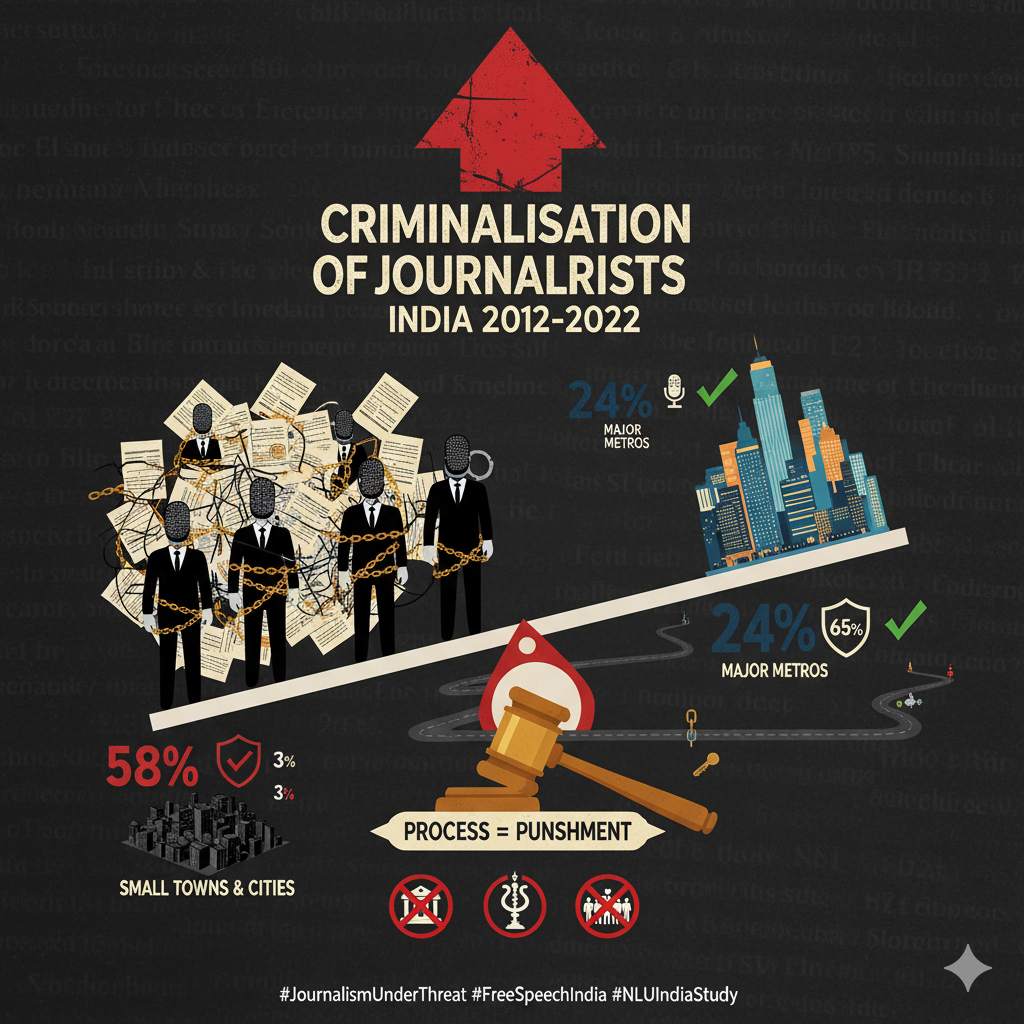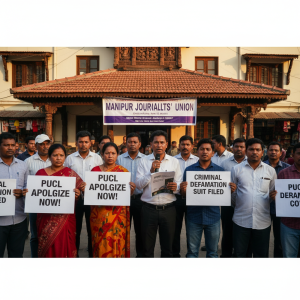A landmark study co-authored by the National Law University (NLU), Delhi, analyzing 423 criminal cases against journalists from 2012-2022, found a “troubling pattern of criminalisation” in India. The three most common reasons for criminal charges were: reporting on public officials (147 incidents), reporting on religious matters (99 times), and reporting on protests (79 times). Crucially, the study highlighted a severe disparity based on location and language: journalists working in small cities and towns faced an arrest rate of 58%, compared to only 24% for those in major metropolises. Furthermore, small-town reporters secured interim protection from arrest only 3% of the time, a figure that rockets to 65% for their Delhi-based counterparts. The report concludes that while “the process is the punishment,” the pain inflicted is often proportional to the accused’s distance from the national capital.
Given that journalists in small towns are six times less likely to receive judicial protection than those in metropolises, how can the national press and legal bodies decentralize support and ensure equal justice for all reporters facing criminal charges?





